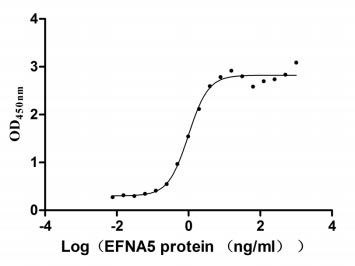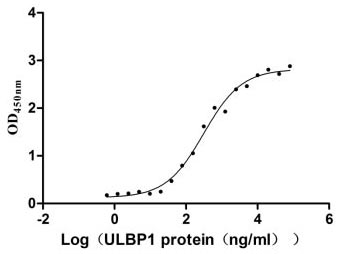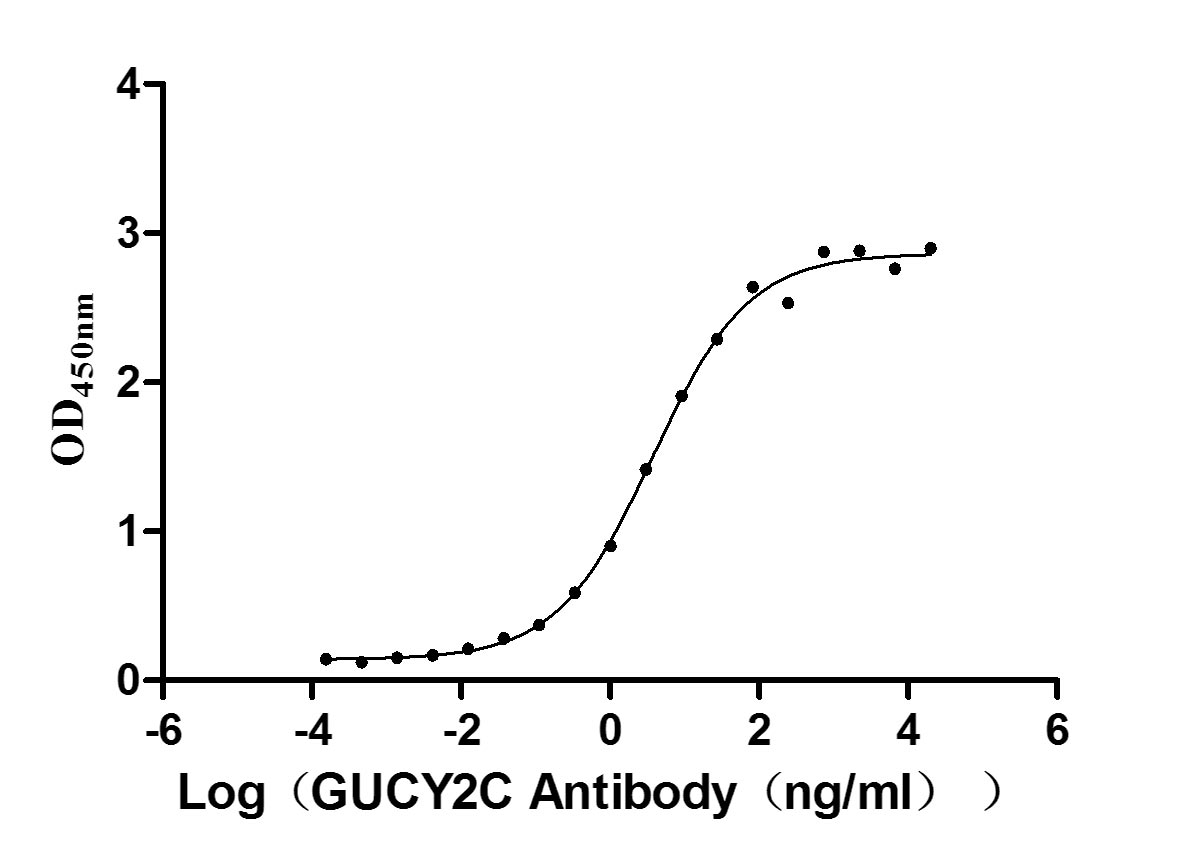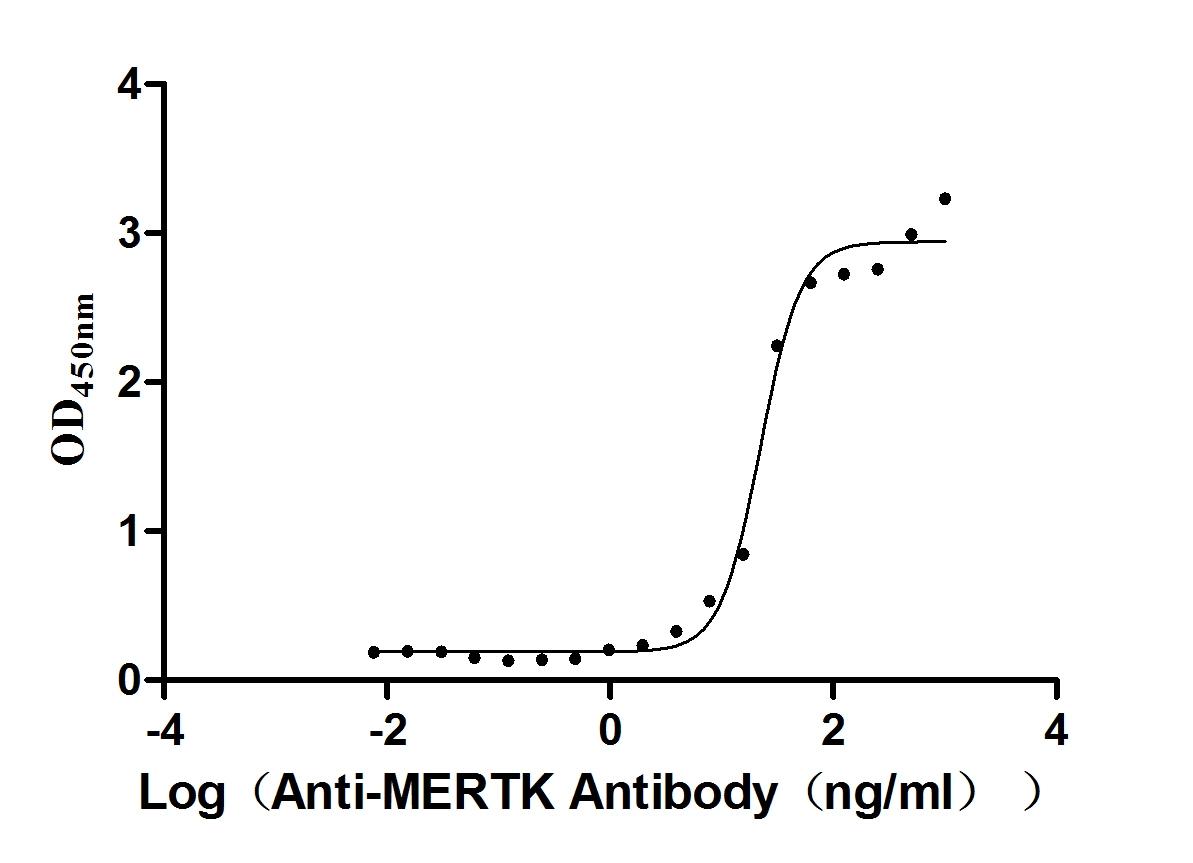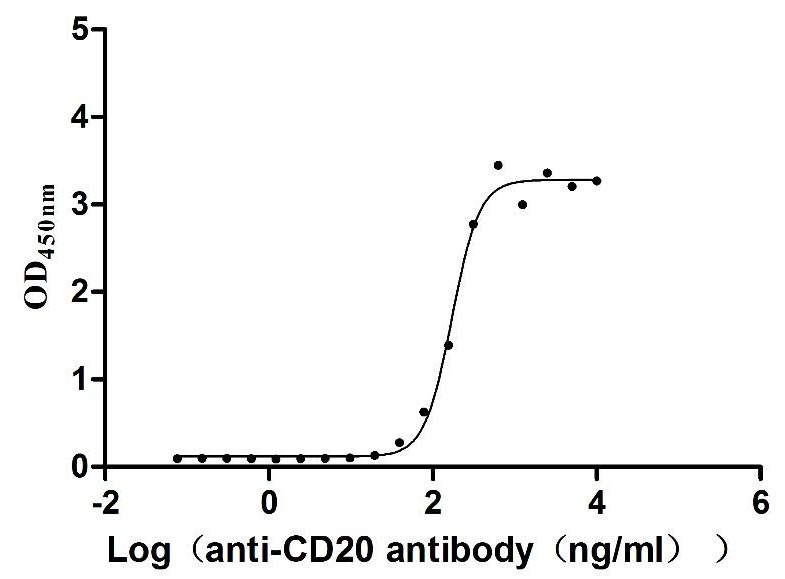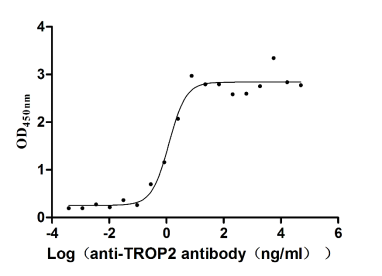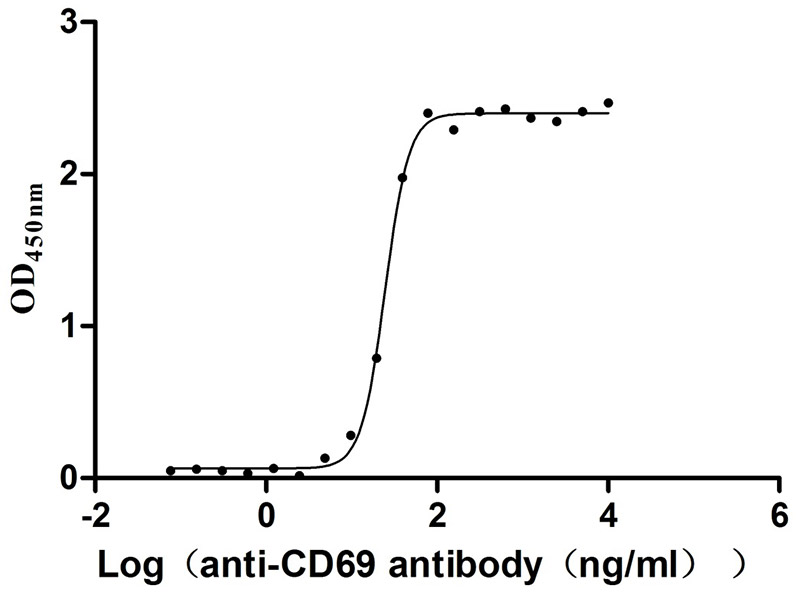Recombinant Human Pericentriolar material 1 protein (PCM1), partial
-
中文名稱:人PCM1重組蛋白
-
貨號:CSB-EP618977HU-B
-
說明書:
-
規格:
-
來源:E.coli
-
共軛:Avi-tag Biotinylated
E. coli biotin ligase (BirA) is highly specific in covalently attaching biotin to the 15 amino acid AviTag peptide. This recombinant protein was biotinylated in vivo by AviTag-BirA technology, which method is BriA catalyzes amide linkage between the biotin and the specific lysine of the AviTag.
-
其他:
產品詳情
-
純度:>85% (SDS-PAGE)
-
基因名:PCM1
-
Uniprot No.:
-
別名:hPCM-1; PCM-1; pcm1; PCM1_HUMAN; Pericentriolar material 1; Pericentriolar material 1 protein; PTC4
-
種屬:Homo sapiens (Human)
-
蛋白長度:Partial
-
蛋白標簽:Tag?type?will?be?determined?during?the?manufacturing?process.
The tag type will be determined during production process. If you have specified tag type, please tell us and we will develop the specified tag preferentially. -
產品提供形式:Lyophilized powder
Note: We will preferentially ship the format that we have in stock, however, if you have any special requirement for the format, please remark your requirement when placing the order, we will prepare according to your demand. -
復溶:We recommend that this vial be briefly centrifuged prior to opening to bring the contents to the bottom. Please reconstitute protein in deionized sterile water to a concentration of 0.1-1.0 mg/mL.We recommend to add 5-50% of glycerol (final concentration) and aliquot for long-term storage at -20℃/-80℃. Our default final concentration of glycerol is 50%. Customers could use it as reference.
-
儲存條件:Store at -20°C/-80°C upon receipt, aliquoting is necessary for mutiple use. Avoid repeated freeze-thaw cycles.
-
保質期:The shelf life is related to many factors, storage state, buffer ingredients, storage temperature and the stability of the protein itself.
Generally, the shelf life of liquid form is 6 months at -20°C/-80°C. The shelf life of lyophilized form is 12 months at -20°C/-80°C. -
貨期:Delivery time may differ from different purchasing way or location, please kindly consult your local distributors for specific delivery time.Note: All of our proteins are default shipped with normal blue ice packs, if you request to ship with dry ice, please communicate with us in advance and extra fees will be charged.
-
注意事項:Repeated freezing and thawing is not recommended. Store working aliquots at 4°C for up to one week.
-
Datasheet :Please contact us to get it.
相關產品
靶點詳情
-
功能:Required for centrosome assembly and function. Essential for the correct localization of several centrosomal proteins including CEP250, CETN3, PCNT and NEK2. Required to anchor microtubules to the centrosome. Involved in the biogenesis of cilia.
-
基因功能參考文獻:
- In the absence of PCM1, Mib1 destabilizes Talpid3 through poly-ubiquitylation and suppresses cilium assembly. PMID: 27146717
- Data suggest that USP9X as an integral component of centrosome where it functions to stabilize PCM1 and CEP55 and to promote centrosome biogenesis; N-terminal domain of USP9X appears to be responsible for physical association of USP9X with PCM1 and CEP55. (USP9X = ubiquitin-specific protease 9X; PCM1 = pericentriolar material 1 protein; CEP55 = 55kDa centrosomal protein) PMID: 28620049
- a novel variant in the PCM1 3'UTR is significantly associated with ovarian cancer PMID: 24909162
- no association between the PCM1 gene and schizophrenia in a Japanese population PMID: 24576429
- Haematological neoplasms associated with t(8;9)(p22;p24); PCM1-JAK2 have features in common and we suggest that they should be recognized as a specific entity in the WHO classification PMID: 24913195
- these data suggest a mechanism whereby the recruitment of Plk1 to pericentriolar matrix by PCM1 plays a pivotal role in the regulation of primary cilia disassembly before mitotic entry. PMID: 23345402
- Chromosomal translocation [t(8;9)(p22;p24)]/PCM1-JAK2 fusion protein activates SOCS2 and SOCS3 via STAT5 in a cutaneous T-cell lymphoma cell line. PMID: 23372669
- CEP90 physically interacts with PCM-1 at centriolar satellites, and this interaction is essential for centrosomal accumulation of the centriolar satellites and eventually for primary cilia formation. PMID: 23110211
- PCM1 interacts with Hook2 in a complex that regulates a limiting step required for further initiation of ciliogenesis after centriole maturation. PMID: 21998199
- NEK7 is essential for PCM accumulation in a cell cycle stage-specific manner. PMID: 22100915
- WT HTT regulates ciliogenesis by interacting through huntingtin-associated protein 1 (HAP1) with pericentriolar material 1 protein (PCM1). PMID: 21985783
- The data failed to find a significant association between SNPs or haplotypes of the PCM1 gene and schizophrenia in the Japanese population (P>0.28). PMID: 21481569
- These data provide further evidence that PCM1-though certainly not a major risk factor in the Northern Swedish population-cannot be ruled out as a contributor to schizophrenia risk and/or protection. PMID: 20468070
- DISC1 coding variants modulate centrosomal PCM1 localization, highlight a role for DISC1 in glial function and provide a possible cellular mechanism contributing to the association of these DISC1 variants with psychiatric phenotypes. PMID: 20360304
- Hook3- and PCM1-mediated dynamic assembly of pericentriolar material is essential for interkinetic nuclear migration. PMID: 20152126
- multiple processes involved in regulating the abundance of NIMA (never in mitosis gene a)-related kinase 2 kinase at the centrosome including microtubule binding, the centriolar satellite component PCM-1, and localized protein degradation PMID: 15659651
- To study the rearrangement created by the t(8;9)(p22;p24)used dual-colour FISH on metaphases from patient cells using labelled-BAC clones centred on PCM1. PMID: 16034466
- A genetic translocation in atypical chronic myeloid leukemia yields a new PCM1-JAK2 fusion gene. PMID: 16091753
- The PCM1 gene is implicated in susceptibility to schizophrenia and is associated with orbitofrontal gray matter volumetric deficits. PMID: 16894060
- cytogenetic change of t(8;9)(p22;p24) may induce HLA-DR immunophenotypic switch and a coordination of the two evolutional changes may play a role in leukemic cell progression PMID: 18594780
- PCM1 gene is implicated in schizophrenia. PMID: 18762586
- CEP290 binds to PCM-1 and localizes to centriolar satellites in a PCM-1- and microtubule-dependent manner. PMID: 18772192
- decreased colocalization of DISC1 and its binding partner PCM1 after Phe607 DISC1 transfection PMID: 19455170
顯示更多
收起更多
-
相關疾病:A chromosomal aberration involving PCM1 is found in papillary thyroid carcinomas (PTCs). Translocation t(8;10)(p21.3;q11.2) with RET links the protein kinase domain of RET to the major portion of PCM1.
-
亞細胞定位:Cytoplasm, cytoskeleton. Cytoplasm, cytoskeleton, microtubule organizing center, centrosome. Cytoplasmic granule. Cytoplasm, cytoskeleton, microtubule organizing center, centrosome, centriolar satellite. Cytoplasm, cytoskeleton, cilium basal body. Note=Recruitment to the centrosome requires microtubules and dynein. The majority of the protein dissociates from the centrosome during metaphase and subsequently localizes to the cleavage site in telophase. Displaced from centriolar satellites and centrosome in response to cellular stress, such as ultraviolet light (UV) radiation or heat shock, in a process that requires p38 MAP kinase signaling.
-
蛋白家族:PCM1 family
-
組織特異性:Expressed in blood, bone marrow, breast, lymph node, ovary and thyroid.
-
數據庫鏈接:
Most popular with customers
-
Recombinant Human Ephrin-A5 (EFNA5) (Active)
Express system: Mammalian cell
Species: Homo sapiens (Human)
-
Recombinant Human UL16-binding protein 1 (ULBP1) (Active)
Express system: Mammalian cell
Species: Homo sapiens (Human)
-
Recombinant Severe acute respiratory syndrome coronavirus Spike glycoprotein (S), partial (Active)
Express system: Mammalian cell
Species: Human SARS coronavirus (SARS-CoV) (Severe acute respiratory syndrome coronavirus)
-
Recombinant Human Heat-stable enterotoxin receptor (GUCY2C), partial (Active)
Express system: Mammalian cell
Species: Homo sapiens (Human)
-
Recombinant Mouse Tyrosine-protein kinase Mer (Mertk), partial (Active)
Express system: Mammalian cell
Species: Mus musculus (Mouse)
-
Recombinant Dog B-lymphocyte antigen CD20 (MS4A1)-VLPs (Active)
Express system: Mammalian cell
Species: Canis lupus familiaris (Dog) (Canis familiaris)
-
Recombinant Human Tumor-associated calcium signal transducer 2 (TACSTD2), partial (Active)
Express system: Mammalian cell
Species: Homo sapiens (Human)
-
Recombinant Human Early activation antigen CD69 (CD69), partial (Active)
Express system: Mammalian cell
Species: Homo sapiens (Human)


